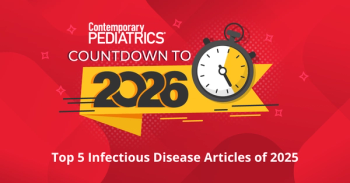
- Vol 37 No 8
- Volume 37
- Issue 8
Back to school, or back to remote learning?
As the battle with COVID-19 continues, so does the difficult decision about how to educate our children this fall.
As the COVID-19 pandemic continues to surge in many states around the United States and as the incidence of disease is significantly increasing in the 10- to 18-year-old population, the subject of the whether schools will reopen in the fall for in-person learning is at the top of the minds of a multitude of people including parents, teachers, students, pediatricians, and public health officials. This is a decision that needs a lot of thought in order to ensure that the setting for in-person learning is as safe as it can be for students, teachers, custodians, lunch room workers, school crossing guards, and other personnel that work in the school setting. It is a decision that is not “one size fits all” but needs to be individually adapted to specific school settings. Even though many national organizations including the American Academy of Pediatrics (AAP), the Centers for Disease Control and Prevention (CDC), the National Education Association (NEA), and the National Academy of Sciences (NAS) support the reopening of schools for the many social and psychological benefits of in-person learning, these benefits must be balanced with the threat posed by COVID-19 and schools should not be forced, under any conditions, to reopen in an unsafe manner. One of the key factors that needs to be considered is the level of COVID-19 disease that is circulating in the community at the time that a school district plans to reopen, especially the amount of disease being seen in children 10 to 18 years of age. If these levels are high, it would be unwise to reopen schools at that time. For many school districts, e-learning will be what is rolled out at the beginning of the year. For others, a hybrid model of part in-person and part e-learning will be feasible. The model of all in-person learning will probably comprise a minority of school districts.
As we continue to address the emerging issues that have been impacted by COVID-19, I want to personally thank all of our pediatric health care provider heroes for providing the safest and most comprehensive care to our patients. As the actor Christopher Reeve stated, “A hero is an ordinary individual who finds the strength to preserve and endure in spite of overwhelming obstacles.”
Please stay safe and well. I welcome your suggestions, comments, and questions.
The articles focusing on Back to School include:
“Safe Return to School” by Hallas and colleagues, which provide detailed guidance on different areas where protocols need to be developed and in place to ensure that the in-person learning environment is as safe as possible.- The Pediatric Pharmacology article
“Guidelines for the best hand sanitizers” dovetails nicely with the Safe Return to School articles as hand hygiene is critically important in any in-person learning protocol. The biggest obstacle will be the purchase of hand sanitizers, difficult to find in stores.
With warmest regards,
Tina Q. Tan,
Editor-in-Chief
Articles in this issue
over 5 years ago
Safe return to school: Part 2over 5 years ago
Bully bullae in a toddler spreads across the bodyover 5 years ago
A fever, liver abnormalities, and pancytopeniaover 5 years ago
COVID-19: Keep smiling!over 5 years ago
Recommendations for compounded hand sanitizers during COVID-19over 5 years ago
New approach to EOS reduces testing and antibioticsover 5 years ago
Safe return to school: A call to actionover 5 years ago
Smartphone apps for weight control?: How to chooseover 5 years ago
Melatonin helps children with ASD overcome insomniaNewsletter
Access practical, evidence-based guidance to support better care for our youngest patients. Join our email list for the latest clinical updates.



